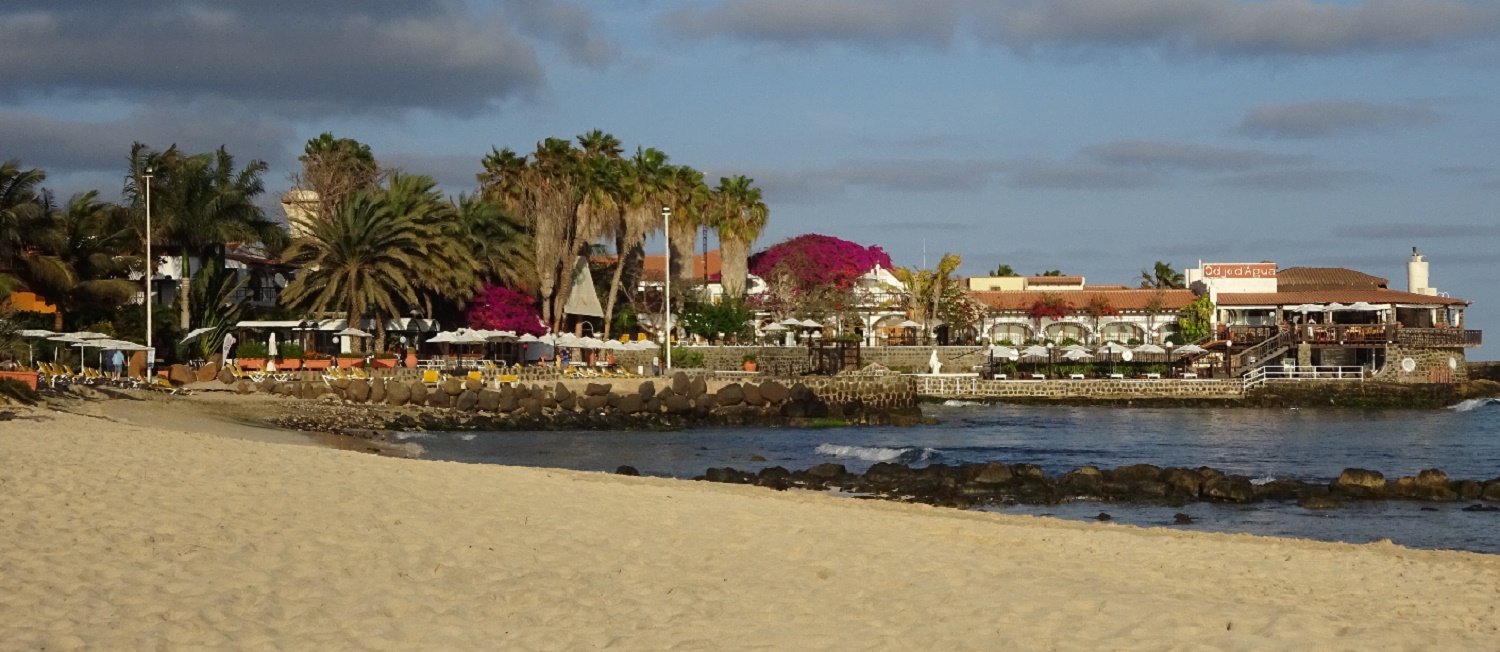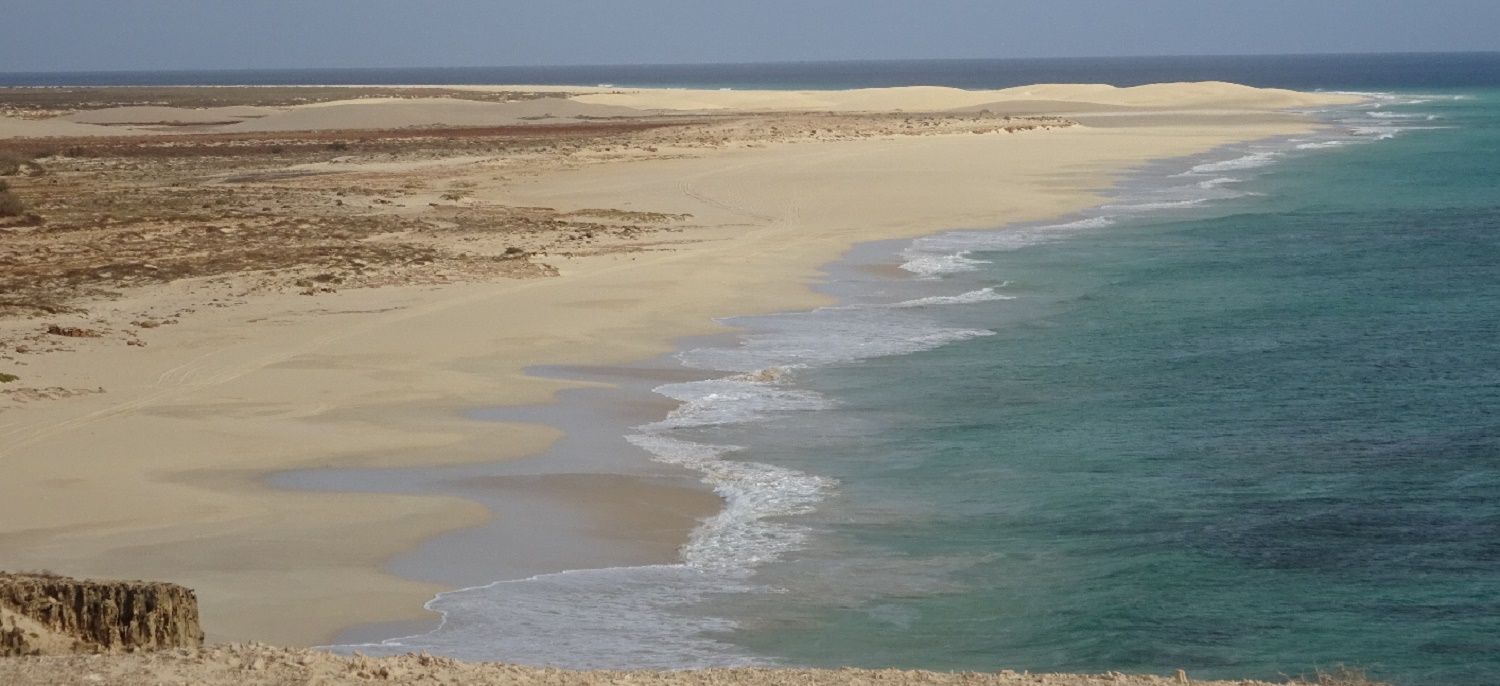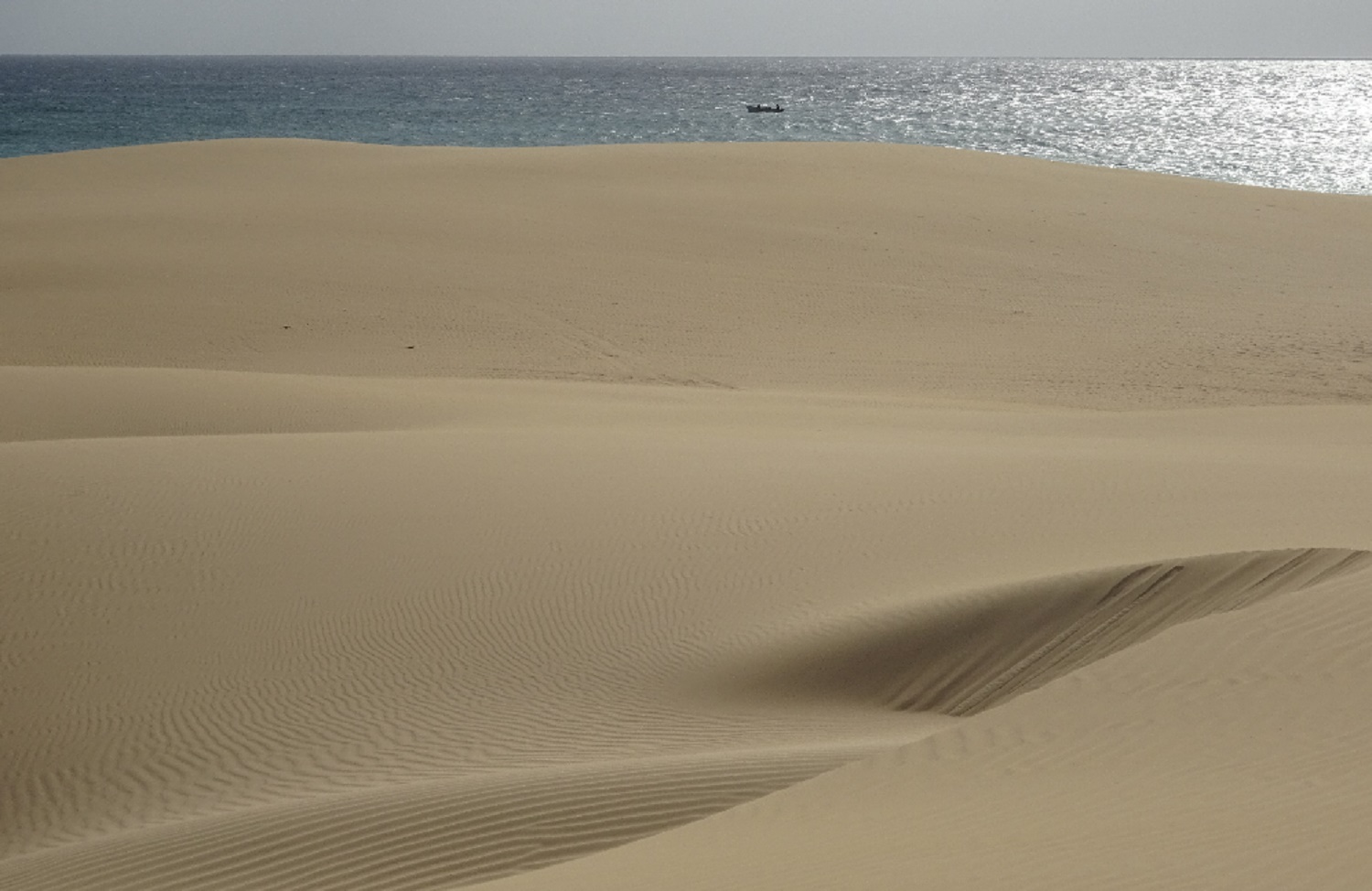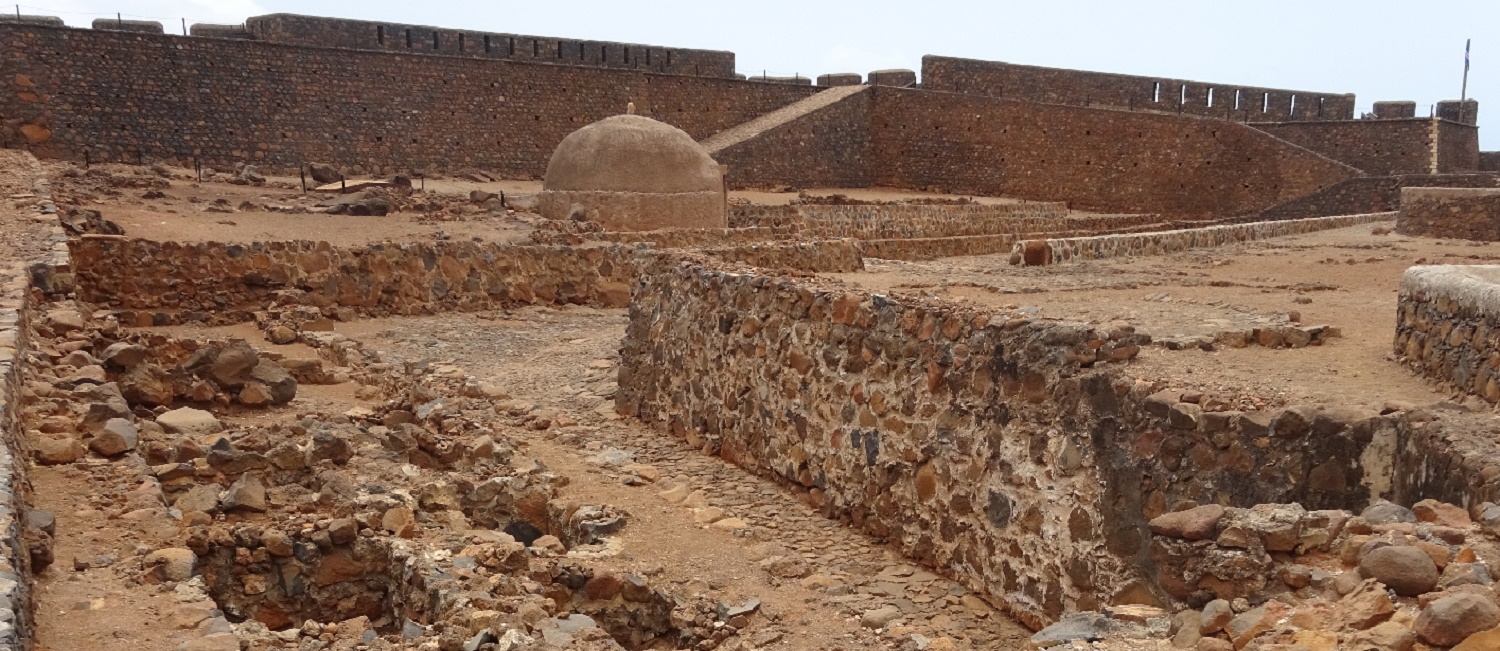Reviews
No stress: island hopscotching across Cabo Verde

First timers to Africa will find Cabo Verde (as it has been called since an official name change from Cape Verde in 2013) a very easy step to take. Sun, sand, world-class surfing, a little bit of culture, a lot of hiking up volcanoes, but with no need for injections and no threat of violence. What’s not to like? Oh, the awful all-inclusive compounds that occasionally blight the coasts of Sal and Boa Vista – though they are easily circumvented.
There are ten major islands (nine inhabited), situated below the Tropic of Cancer, 500 kilometres off Senegal and 3,500km from the Caribbean. They are the furthest south of a widely spread group, including the Azores and the Canaries, that comprise Macronesia. These are much the most African and exotic.
Flights between islands cost about €100 one way right up to departure, though they are quite a bit cheaper booked a little further in advance. The map shows the routes of the local carrier, TACV.

Thousand-room all-inclusive are a black cloud in the otherwise bright blue skies over Cabo Verde, discrete from the local economy and a deterrent to independent travellers. But outside Sal and Boa Vista you will see very few foreigners at all. “No stress” is the catchphrase here, daubed on bar-room walls and muttered by locals as you pass them on the beach, and away from the hellish hoards it couldn’t be more appropriate.
Sal
Sal is flat and brown and smooth. Just 20 minutes from the airport, the town of Santa Maria is at the southern tip. This is a great little place to spend a few days de-stressing, chilling on the beach and wandering around the markets.
At the centre of the long beach is Hotel Morabeza, the first accommodation built for tourists, opened in the 1960s by a Belgian family which run it still. A ten minute walk west is the neat and tidily designed Hotel Dunas de Sal; it is currently quiet there, although several new resorts are under construction. So a better option might be to stay on the eastern promontory that houses Odjo d’Agua Hotel, which also has a restaurant with dazzling views to the sunset back along the beach, overlooking colourful fishing boats moored off the pier.
There are rows of low-rise pastel-coloured buildings and it is easy to walk around the relaxed streets. On Rua 1 Junho, a lovely cobbled lane parallel to the sea, you will find pleasant restaurants (with excellent seafood dishes), cool bars (with terrific wine selections), and shops selling authentic West African tribal art hidden among the cheap tourist tat. On the beach there is a fun vibe where locals play in the surf while a few foreigners laze on the sun-loungers.

Exposed to Atlantic winds – and it must be said cold seas – there is excellent surfing, windsurfing, kitesurfing and stand-up-paddling. There are half a dozen dive centres too, and although the standard boat dives are just that – standard – something different are the caves a 45 minute drive up the only road north, past the airport to the north-west coast.
The Blue Eye at Baracona is a stop on the island excursions sold all over Santa Maria. The underground pool, which refracts the sun shining through a small hole in the surface that the coach parties peer through, can be dived via an underwater burrow. And at Palmeira just around the corner there are a series of caves linked by natural tunnels holding blizzards of fish that happily bump into you as you bimble along.
Boa Vista
It is a 15 minute flight south to Boa Vista, twice the size of Sal, with 55km of white sand beaches all the way around the flat, windswept and sunburned rock. On leaving the very cute airport terminal, the clue to this island is that all the waiting taxis are 4x4s.
Ten minutes from the airport up the north-west coast is Sal Rei, with carefree cobbled streets and a lovely main square that is home to a small church – surely built specifically for holiday brochure photographs – and all the local action. It feels almost untouched by foreign tourists.
One of the very best restaurants in the entire archipelago is found here: the tiny Blue Marlin. An ancient fisherman’s house with only three or four tables, you have to order the local specialities the day before so they have time to prepare. It is well worth it for the traditional Cabo Verdean dishes, especially fish and other seafood, like the mountainous portion of cachupa rica (corn like grits, a huge hill of beans, winter vegetables, with tuna or meat) that is surprisingly hearty. You can also book your deep-sea fishing trips here, and they proudly boast a record catch of Marlin pushing 400kg.

The choicest place to stay is the ten room Orquidea Guest House, guarded by a couple of chatty macaws. This is located at the start of Estoril beach heading south away from the town via a row of four or five beach clubs that provide sunbeds and parasols, a serviceable massage and an outstanding lunch, all to a soundtrack of chilled house music. There was not another soul in ours all day long.
The ocean is the colour and clarity of the Caribbean. Humpbacks come here to breed from February to April.
The best way to explore the deserted southern beaches is on a quad bike. There are a couple of places to rent them in the main square, or you can get them directly from Quad Zone near the airport.
To get to remote and wild Santa Monica beach you really need a guide to navigate the intricate tangle of smudged off-road tracks or else you are sure to get lost and miss the best bits. It is a 45 minute drive south down the main road and across a dirt trail. Then it is 20km of pristine flat white sand bordered by small sand dunes and grass tufts. You will sunbathe alone, so bring water and a towel as there are zero facilities here.

Zoom along Santa Monica to Verandinha beach, where loggerhead turtles lay their eggs from June to hatch before the end of the year. Then you reach the bigger dunes in a lunar landscape towards Chaves beach. These are great fun. The whole loop south and back around the coast of this literal desert island takes about four hours. This is nothing like some sanitised theme-park dune-bashing. It feels like a remote adventure on virgin territory.
Santiago
It is a 30 minute flight south-west to Santiago, the largest island in the archipelago, and the first to be settled. There were no indigenous people in Cabo Verde so nobody lived here until the Portuguese came in 1462.
This island is big enough to warrant a hire car. There is a Hertz desk in the airport terminal and in the Hotel Pestana Tropico 10 minutes away in a cab below the plateau in the bay.
The modern capital is Praia, which is undergoing rapid expansion as the islands urbanise; with 130,000 inhabitants, it holds a quarter of the total in Cabo Verde. Anyone who has travelled at all in West Africa will recognise it here. There are decent restaurants and bars in town and a burgeoning cultural scene. A good introduction to the local music is on Space Echo, a recent compilation. Cesaria Evora, the grande dame of morna sounds and known as the barefoot diva, is now recognised on the 2,000 escudos note (though euros are widely accepted). But travellers mostly use Praia as a base to explore further afield.
The main attraction is the ancient capital, Ribeira Grande (now known as Cidade Velha or old city), 13km west, which was recently declared a UNESCO World Heritage Site. This was a central stop-off in the slave trade. Slaves from West Africa were brought here to be forced to convert to Catholicism and to be given a European name to increase their price for sale in Brazil. Brazil was the last country in the Western world to abolish slavery, just before the twentieth century in 1888. By then, an estimated minimum of four million slaves had been shipped from Africa to Brazil, one-third of the total number stolen to the Americas.
There is a fort, carefully restored in 1999, high on the cliff overlooking the rocky headland 800 metres below, where there are the ruins of a cathedral; around the corner in the fertile but dry river valley is the rebuilt monastery. A modern village is spread among the sites. Be lucky and avoid a day when the cruise ships are in town. The only other people when we were there was a school of uniformed kids on an educational trip from up-island.

The Fort Real do Sao Filipe was built in 1585. You could say that round the rugged rocks the ragged ramparts run. Ha! There are beautiful views all along the coast, especially at sunset. The Cathedral was begun in 1556, completed in 1693, but ransacked and destroyed by French pirates in 1712 when they stole the wealth of the town, triggering the capital’s move to Praia. Near the cathedral is the Pelourinho, a sixteenth century pillory used to punish slaves. You can dive the shipwrecks off the headland; it is just being explored now.
There is not a great selection of hotels here. The best is probably the Por Do Sol, which has beautiful views over the stony bay below the cliff. The staff seemed confused that anybody had turned up to stay; evidently nobody else had for quite a while.
Take the brand new road back towards Praia then round the ring road and north towards Assomada and Tarrafal up into the mountains. After 30 minutes, at Sao Domingos, take the second left opposite the BCA bank towards Rui Vaz on the cobbled road; soon after Rui Vaz there is a left turn to the hidden pleasure of Quinta da Montanha. This hotel has 18 rooms, though as it is cold here at night it is a better bet for lunch; the views are across the outlandish rock formations on the mountains through the trees all the way to the white foam lapping at the shores in the far distance.
Carry on through the mountains, ducking and diving on the bendy road, occasionally disappearing into the clouds, as huge vistas open up – there is excellent hiking to be had here – until you reach Tarrafal on the north-west coast.

This is a very pretty beach, with fishing boats hauled up onto the sand on the southern half, leaving sunbathers the northern end, although there are no sunbeds or any other kind of facilities. This sand is white, in contrast with the black beaches on the eastern side of the island, which are of volcanic clasts. There is a hotel spilling onto the beach, the Baia Verde, but in keeping with the whole town it is rather tatty.
Fogo
Sit on the right hand side of the plane and you will get a decent profile of the Fogo volcano, the reason for coming here. It was the great eruption of 1680 which gave the island its name – fogo means “fire” – and sculpted much of the valley we see today.
These are all volcanic islands: formed by explosions under the sea and then eroded by the wind. The easterly ones like Sal and Boa Vista are the oldest at about 26 million years and so they have been flattened and browned. The central islands date 12 million years and the western ones like Fogo are green and mountainous at just 100,000 years.
Volcanoes are full of nutrients and are therefore very fertile. Hence, they grow wine here in the Cha Das Caldeiras (the “plane of craters”). The other local beverage in Cabo Verde is grogue, a raw and throaty kind of rum made from sugarcane brought with slaves from mainland Africa; sweetened with honey it is a much more palatable ponche.
The whole island of Fogo seems to rise more or less straight from the sea and up to the 2829 metre summit of the volcano. The charming town of Sao Filipe tumbles down the western acclivity to the water’s edge. There is a strong French influence here, especially noticeable in the language.
The Colonial Guest House is one of the best hotels in the archipelago. There are hardwood floors, high ceilings, a small pool and a gorgeous courtyard with canopies over garden furniture, all facing the small island of Brava 15km away to the west.

It is a 45 minute drive from Sao Filipe along the steep winding road to the foot of the volcano, from where there are great views of the summit. At first it looks like a giant plough has churned up the rocks; this is the lava field. Higher up it is like fine gravel; the lapilli.
Until recently, the road ran roughly south to north parallel to the gently curving mountain range that encloses the pico to the east. However, it now suddenly stops 2km short of the town of Portela. A major eruption in 2014 spilled lava into the valley, flooding across the road, which now disappears under the rubble. Much of the town, along with some vineyards, were also destroyed.
This means that many of the guide books are out of date. Instead of driving to and hiking from Portela, you have to get out where the lava smothers the road and walk for an hour to the mouth of the crater of the 2014 eruption on the west side of the main cone. This is a colourful gash, 50m long, with steam rising from the bottom (the yellow markings at the rim are a pungent sulphur that was precipitated from the gas as it cooled). It affords wonderful views across the valley as well as to the top of the main crater. It is another hour round towards Portela to start the three hour climb to the top itself.

After a decent rest, we took the four hour misnamed fast-boat back to Praia – everyone was given their own much-needed sick bag when we got on – then flew on to Sal.
This is not the most intrepid destination reviewed on Broader Horizons. But don’t be deterred by the reputation of Cabo Verde for all-inclusives. There is lots to see and do, it feels remote, and travelling around on your own you are going to have a very different experience of these lovely islands than that of the Thomson’s crowd.